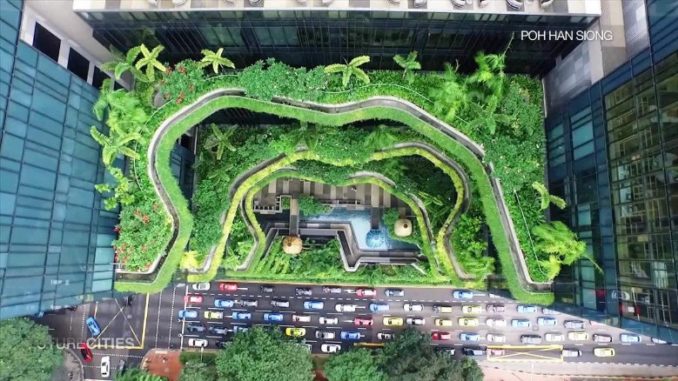
You want a habitat to live, but don’t want to damage nature, ‘green architecture’ is a star and sustainable idea. Whoever, evolved this concept, must be a true nature lover.
A sustainable method of green building design is called ‘green architecture’. It is designing and construction of a house keeping the environment in mind. An eco-friendly house, is a concept of energy efficiency, that is, placement of doors and windows in a house by using position of the Sun. It decides the entrance of sun rays into the house; simultaneously, the materials used in construction which might include solar panels, thermal mass building construction, green materials, including wood, stone, or earth (or even recycled waste materials, such as tyres or glass or plastic bottles).
Basically. it is a philosophy of architecture that advocates sustainable energy sources, the conservation of energy, the reuse and safety of building materials, and the siting of a building with consideration of its impact on the environment. It is also an approach to building that minimizes harmful effects on human health and the environment. The “green” architect or designer attempts to safeguard air, water, and earth by choosing eco-friendly building materials and construction practices.
These features should be included into a Green Architecture:
- Location of land should be optimal. It means that the land on which the building is going to construct should maximise the use of sun, wind and flora (natural shelter)
- Placement of doors and windows, i.e., ventilation system of the building is designed so, for efficient heating and cooling, i.e., Efficient use of space
- Use of solar or wind energy driven or energy-efficient lighting and appliances
- Plumbing fixtures which are used should save water
- Open and garden spaces or landscapes should be planned like that which maximise the passive solar energy
- The natural habitat should not be harmed or less harmed
- Paint, furniture etc. materials used inside or out should be non-synthetic and non-toxic
- Building materials like wood, stone should be purchased from local market, so eliminating transportation cost and fuel
- Older buildings could be reused and rebuilt by adapting above points.
- Use of recycled materials
The National Institute of Building Sciences (NIBS) argues that sustainability has to be part of the whole design process, from the very start of the project. They devote an entire Website to WBDG—Whole Building Design Guide at www.wbdg.org/. NIBS suggests that these systems must be understood, evaluated, and appropriately applied:
- accessibility
- aesthetics
- cost-effectiveness
- functional or operational
- historic preservation
- productivity (comfort and health of the occupants)
- security and safety
- sustainability
This effort will definitely not destroy the Earth, thus, no bad impact on climate change. If we go like this, human life will go long and the planet will also go on for millions of years.
The building related trades contribute to the greenhouse gases put into the atmosphere. For example, the manufacturing of cement, the basic ingredient in concrete, is reportedly one of the largest global contributors to carbon dioxide emissions. From poor designs to construction materials, the industry is challenged to change its ways. The goal set for ‘Architecture-2030’ is : “All new buildings, developments, and major renovations shall be carbon-neutral by 2030”.

Leave a Reply
You must be logged in to post a comment.